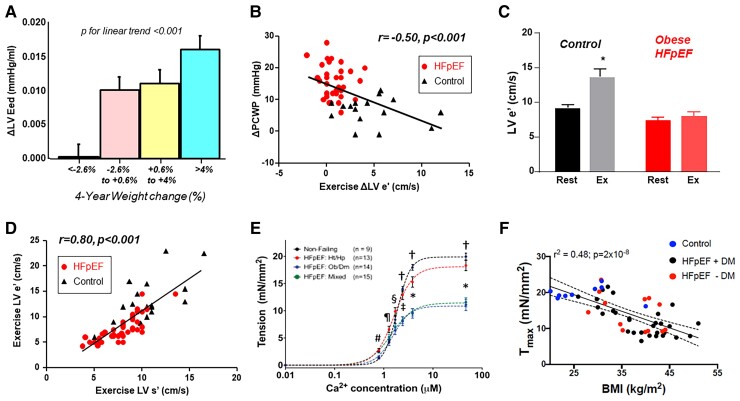Figure 2.
(A) Increasing weight gain is associated with progressively greater increases in estimated left ventricular (LV) end diastolic chamber stiffness (ΔLV Eed) over time in community-dwelling adults, predisposing to HFpEF. (B) Impairments in the ability to enhance LV early diastolic relaxation velocity (ΔLV e′) with exercise are associated with greater increases in pulmonary capillary wedge pressure (PCWP), and enhancement in LV e′ with exercise is substantially blunted in obese HFpEF (C). The ability to augment LV e′ is strongly correlated with enhancement in LV systolic function (LV s′), demonstrating the cross talk between systolic and diastolic reserve (D). When compared with cardiomyocytes sampled from healthy hearts and hypertensive HFpEF, individuals with obese HFpEF display reduced Ca2+ activated maximal tension development (Tmax) at the level of the sarcomere, which is inversely related to body mass index (BMI) (E and F). Panel A adapted from Wohlfahrt et al.,62 Panels B–D adapted from Borlaug et al.,83 and Panels E and F are from Aslam et al.85

